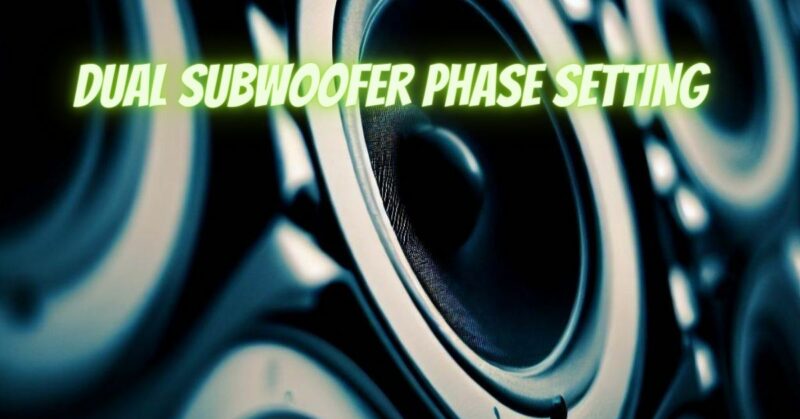Adding a second subwoofer to your audio setup can significantly enhance the low-frequency reproduction, providing a more immersive and powerful bass experience. However, achieving optimal bass performance requires proper configuration, including setting the phase for dual subwoofers. In this article, we will delve into the concept of dual subwoofer phase setting, its importance, and how to optimize it for the best bass response in your listening environment.
Understanding Phase in Subwoofers:
Phase refers to the timing relationship between the subwoofer’s output and the main speakers in your audio system. In the context of subwoofers, it specifically relates to the alignment of the subwoofer’s sound waves with the sound waves produced by the main speakers. When the subwoofer and the main speakers are in phase, their sound waves combine coherently, resulting in a more accurate and balanced bass reproduction. However, when they are out of phase, the sound waves can cancel each other out or create irregularities in the bass response.
Importance of Dual Subwoofer Phase Setting:
When using dual subwoofers, proper phase alignment is crucial to achieve optimal bass performance. In a well-configured dual subwoofer setup, the subwoofers work together seamlessly, delivering smoother and more even bass across the listening area. Proper phase setting helps minimize phase cancellations and reinforces the low-frequency output, resulting in improved bass impact, depth, and clarity.
Optimizing Dual Subwoofer Phase Setting:
- Measurement and Calibration: Begin by measuring the frequency response of each subwoofer individually in your room using a measurement microphone and calibration software. This will help identify any irregularities or null points in the bass response.
- Initial Phase Setting: Set both subwoofers to the same phase initially (either 0 or 180 degrees). This is the starting point for optimizing the phase.
- Listening Test: Play bass-heavy content and listen carefully for any irregularities, boomy or hollow sounds, or a lack of bass impact. Move around the listening area to check for consistency.
- Phase Adjustment: Gradually adjust the phase of one subwoofer by small increments (typically 5-degree adjustments) and evaluate the impact on the bass response. Listen for improvements in bass impact, depth, and overall coherence.
- Iterative Process: Fine-tune the phase setting by making small adjustments and repeating the listening test until you find the optimal phase alignment where the bass sounds the most accurate, balanced, and cohesive throughout the listening area.
- Room Acoustics Consideration: Keep in mind that room acoustics can also affect the bass response. Experiment with subwoofer placement, room treatments, and seating position adjustments to further optimize the bass performance.
Conclusion:
Proper phase setting is essential when using dual subwoofers to ensure optimal bass performance and a more immersive audio experience. By carefully calibrating and adjusting the phase of each subwoofer, you can minimize phase cancellations, reinforce the bass output, and achieve a smoother and more even bass response. Take the time to measure, test, and fine-tune the phase alignment to optimize your dual subwoofer setup and enjoy a more satisfying bass reproduction in your listening environment.


